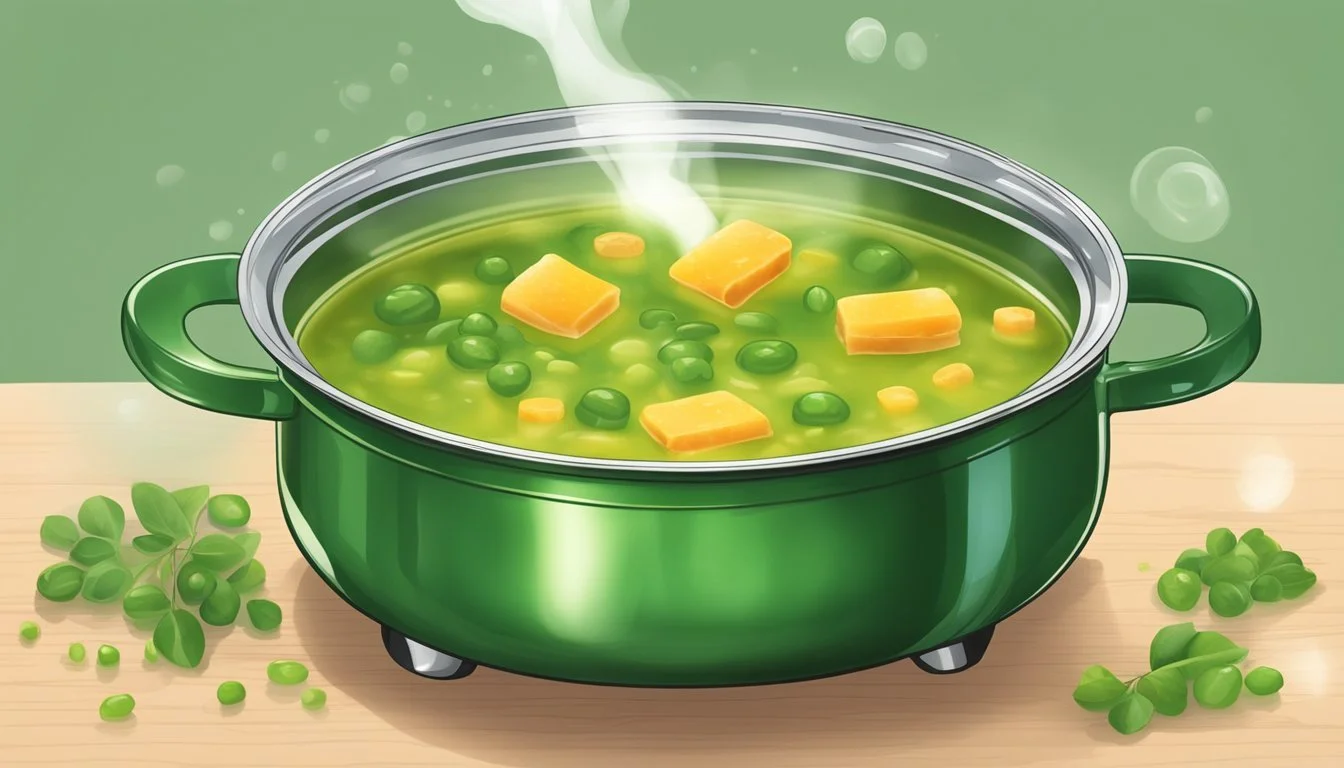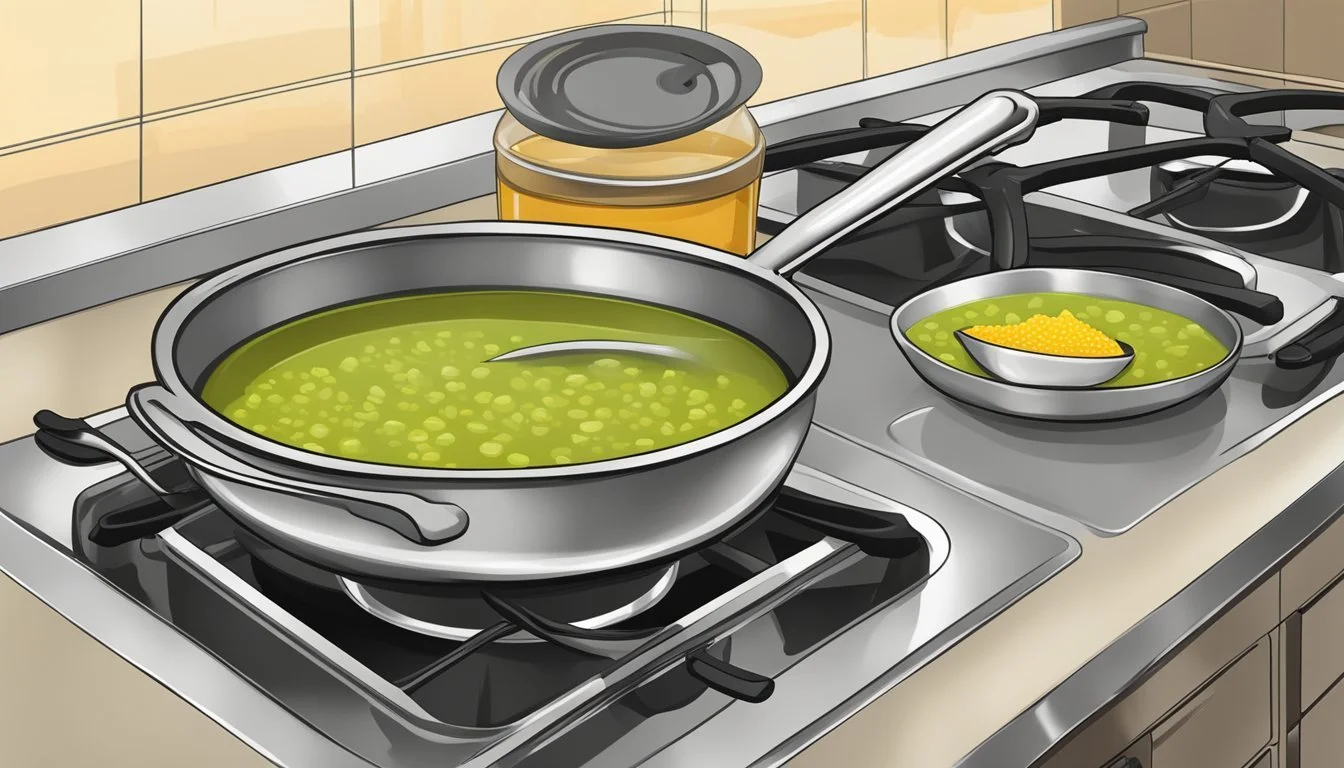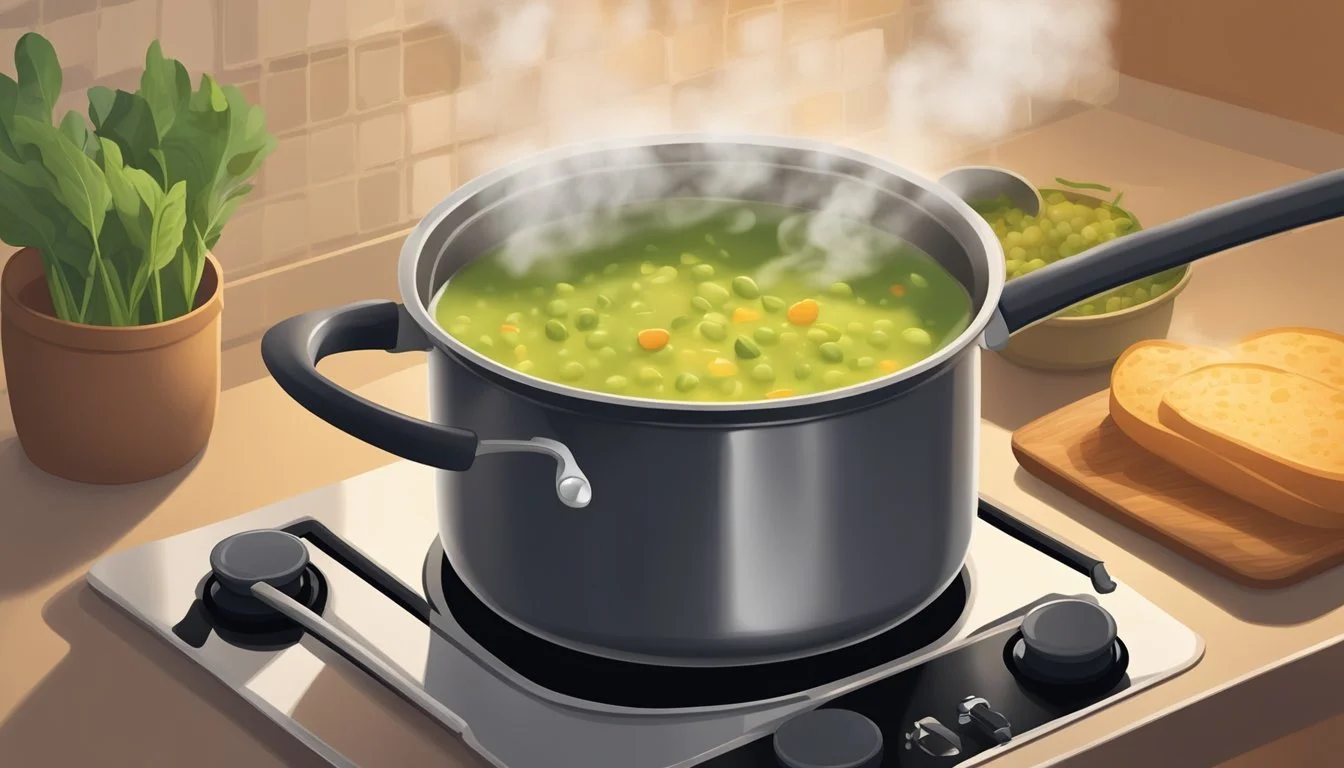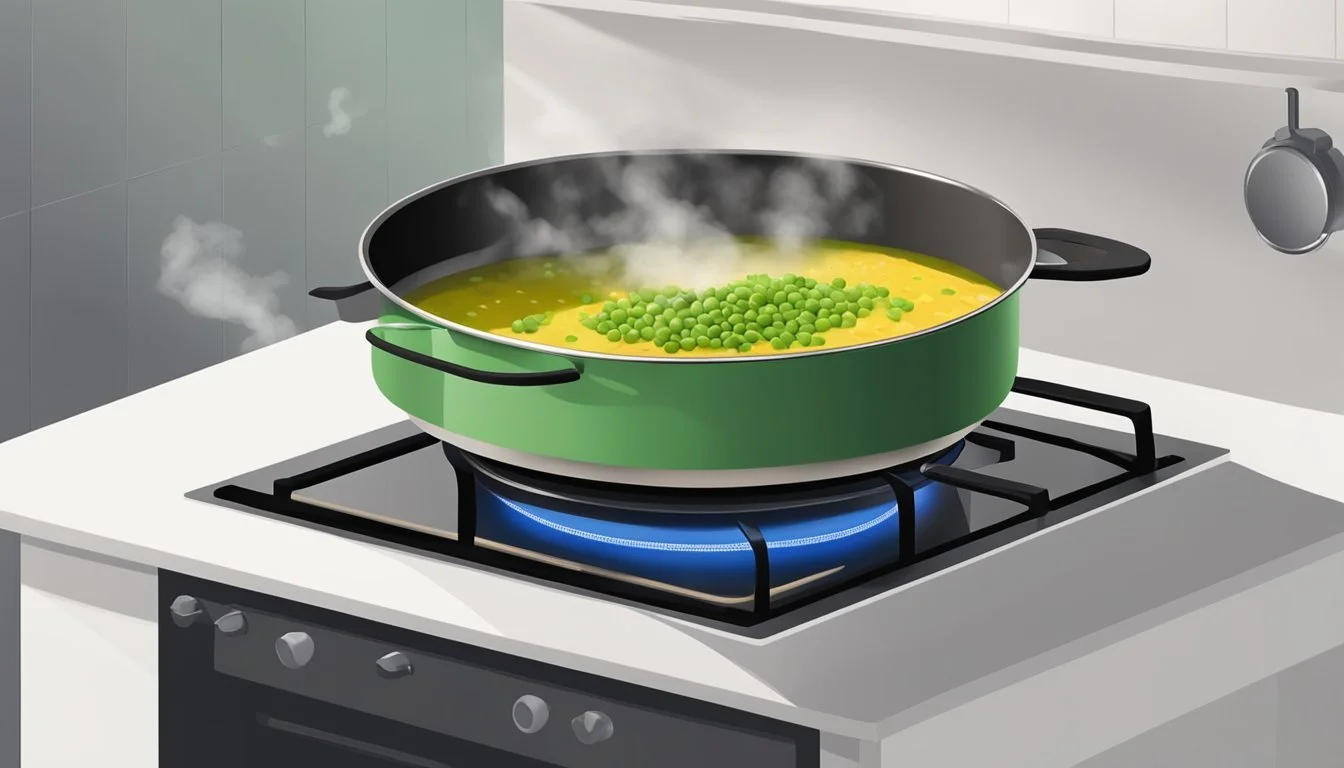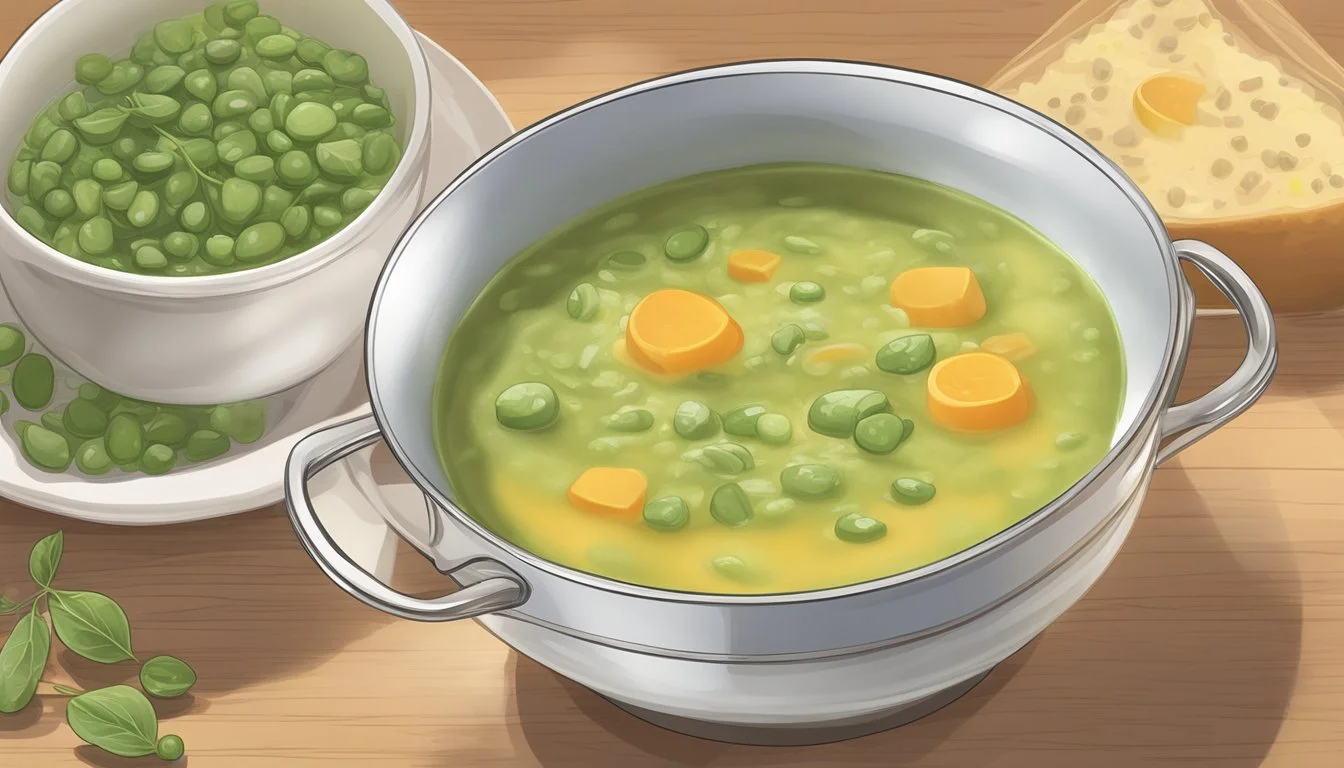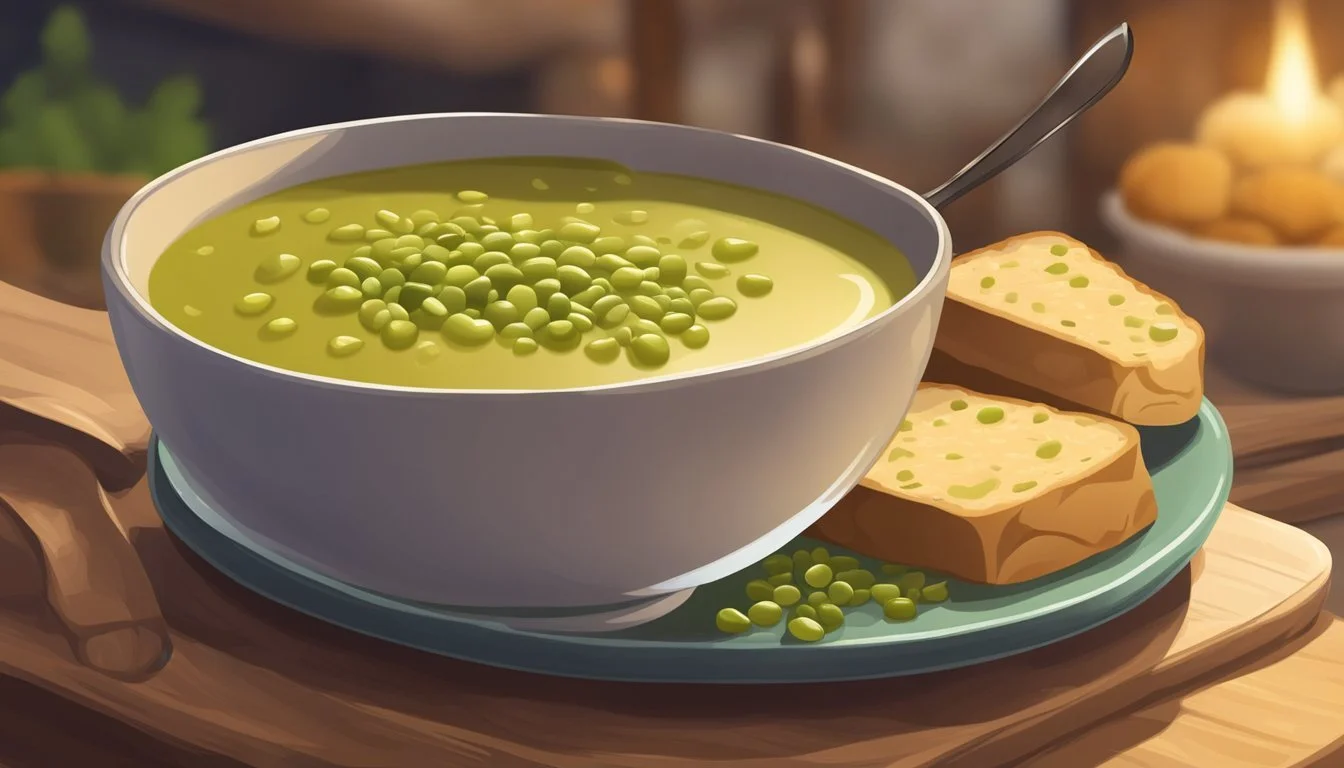Best Way to Reheat Split Pea Soup
Ensuring a Hearty and Comforting Experience
Split pea soup, with its hearty texture and comforting taste, is a classic dish that's both flavorful and healthy. It stands as a testament to traditional home cooking, often associated with warmth and nourishment. This type of soup typically combines split peas with a mix of vegetables and, in many recipes, a type of smoked pork, infusing the broth with a rich and savory depth.
Reheating split pea soup, however, presents a unique challenge. The goal is to restore the soup's thick consistency and robust flavor without compromising its quality. Being dense in nature, split pea soup requires careful reheating to ensure it remains just as satisfying as when it was freshly made. Techniques vary, from stovetop methods to microwave tricks, each with their own steps to preserve the soup's signature texture and taste.
The preservation of the soup's integrity during reheating is crucial, as a balance between temperature and timing can make the difference between a rejuvenated meal and a disappointing one. Whether enjoying a leftover serving or preparing a make-ahead meal, employing the correct reheating strategy will ensure that every bowl of split pea soup eaten is as enjoyable as the first.
Understanding Split Pea Soup Fundamentals
Split pea soup is a classic dish known for its satisfying texture and nutritional richness. It combines a variety of ingredients that work together to create its distinctive hearty flavour.
Ingredients Overview
Split Peas: The base of the soup; high in fiber and plant-based protein.
Carrots, Celery, Onion: These veggies add essential flavours and nutrients.
Ham: Often included for a smoky taste; however, it can be left out for a vegetarian version.
Garlic, Bay Leaves, Thyme: Herbs and spices that enhance the soup's aroma.
Salt, Pepper: Seasonings to taste.
Liquids: Water, chicken broth, or vegetable broth are used to create the soup base.
This soup can sometimes include a ham bone or ham hocks for extra flavour.
Nutritional Value
Split pea soup is more than just a flavourful meal; it's a nutritionally dense choice. Here's a brief overview of its nutritional content:
Fiber: Vital for digestive health.
Protein: Essential for muscle repair and general health. Ham adds to the protein content, but split peas themselves are a good source of protein.
Vitamins and Minerals: Contains vitamins like folate, and minerals such as iron and potassium. The vegetables contribute to the vitamin and mineral content.
This soup is especially beneficial for those looking for meals high in nutrients while being easy to digest.
By understanding the fundamental ingredients and nutritional value of split pea soup, one can appreciate its place as a wholesome and versatile dish.
Preparing Split Pea Soup
To ensure a flavorful and satisfying batch of split pea soup, selecting the right equipment and cooking techniques is essential. One must tailor their approach to include the proper tools and methods to maximize the taste and texture of the soup.
Choosing The Right Equipment
When preparing homemade split pea soup, the choice of cooking vessel is crucial. For the best results, one should consider using a Dutch oven or large pot. These options offer ample space and even heat distribution, making them ideal for cooking soup. In cases where a more hands-off approach is preferred, a slow cooker can be employed to achieve a gently simmered soup. Additionally, having a blender or immersion blender on hand is beneficial for those who prefer a smoother texture, allowing them to puree the soup to their desired consistency after it has been cooked.
Dutch oven/Pot: Even and efficient heat distribution.
Slow cooker: For prolonged, low-temperature cooking.
Blender/Immersion blender: For smoothing out the soup.
Cooking Techniques
Homemade split pea soup is both easy to make and requires simple ingredients like carrots and split peas. Using a pan, start by sautéing diced carrots and other aromatics over medium-high heat. This step develops depth of flavor that will carry through the soup. Afterward, one should add the split peas and liquid, then bring to a boil, before reducing to a simmer. The soup should be cooked over low heat to allow the flavors to meld together.
Briefly sauté vegetables: Enhances flavor.
Simmer on low heat: Develops soup’s hearty taste.
Throughout the cooking process, it is imperative to stir occasionally to prevent sticking and to reduce the heat as needed to maintain a gentle simmer. This careful combination of technique and equipment will result in a tasty, homemade split pea soup that can be enjoyed immediately or reheated later while maintaining its comforting essence.
Reheating Techniques
When reheating split pea soup, the primary goals are to maintain its hearty flavor and creamy texture while ensuring it is heated evenly throughout. The following methods each offer a different approach to achieve these objectives.
Stovetop Method
The stovetop method is ideal for those who want to vigilantly control the reheating process. To reheat split pea soup, pour it into a pot and place it over low heat. It's important to cover the pot, allowing the soup to simmer. Stirring occasionally helps to maintain an even temperature and prevents the bottom from scorching. This technique keeps the soup creamy and avoids overheating, which can compromise flavor.
Microwave Strategy
For a quicker alternative, the microwave strategy can be employed, especially when time is of the essence. To reheat the soup while preserving its texture, place it in a microwave-safe bowl and cover it with a microwave-safe lid or vented plastic wrap. Use medium power to heat the soup, stirring every 2 minutes. This method ensures even distribution of heat and helps maintain the soup's creamy consistency.
Oven-Based Approach
The oven-based approach is less common but useful for large quantities. Preheat the oven to 350°F (175°C), transfer the soup to an oven-safe dish, and cover with aluminum foil. Heat it until the soup is warmed through. One must check periodically and stir to ensure even reheating. Although it takes longer, this method can reheat the soup gently, preserving its flavor and creamy texture.
Slow Cooker Reheating
Lastly, a slow cooker can be used for a gentle reheat. Place the soup in the slow cooker and set it to the low setting. This allows the soup to gradually come up to temperature over the course of several hours. It's recommended to cover the slow cooker with its lid. This reheating method particularly suits split pea soup as the prolonged, low-temperature simmering enhances the flavor without compromising texture.
Maintaining Optimal Flavor and Texture
Reheating split pea soup requires careful attention to flavor and texture to ensure that the soup remains hearty and satisfying upon serving. Here's how one can maintain the core elements that make split pea soup a comforting classic.
Adjusting Seasonings
To ensure that the reheated split pea soup maintains its robust flavor, one may need to adjust seasonings. Salt and pepper should be tasted and added accordingly, as their potency can diminish over time. A pinch of cumin or dried thyme can revive the soup's depth of flavor.
Salt: Add sparingly to avoid over-salting.
Black Pepper: A fresh grind can enhance the soup's aroma.
Bay Leaf: Introduce a new bay leaf while reheating to infuse additional flavor.
Cumin: Stir in a small amount to complement the soup’s earthiness.
Enhancing Creaminess
Achieving a creamy texture is often a highlight of well-prepared split pea soup. To enhance creaminess without diluting flavor, one could stir in a touch of milk or olive oil. For a lactose-free option, a dairy-free milk can substitute.
Olive Oil: A drizzle can enrich the soup’s mouthfeel.
Milk/Dairy: Incorporate slowly and stir to avoid curdling.
Adding Freshness with Herbs
To restore a fragrant and fresh dimension to the reheated soup, consider adding finely chopped parsley or thyme. These herbs can be stirred in after reheating to preserve their freshness and color.
Parsley: Adds a fresh, light flavor and a pop of color.
Thyme: Its lemony and minty qualities can bring a bright note to the soup.
Bay Leaves: Adding fresh bay leaves can deliver a subtle layer of flavor.
Carefully integrating these elements ensures every spoonful of reheated split pea soup is as tender and flavorful as when it was first simmered.
Serving and Garnishing
When serving split pea soup, the right garnishes can elevate its hearty and filling essence. These enhancements should complement the soup’s rich flavor and add an appealing contrast in texture.
Choosing The Right Garnishes
To choose the best garnishes for split pea soup, consider items that will introduce a textural contrast and complement its smokiness and depth. Here are specific recommendations:
Croutons: Offering a satisfying crunch, homemade or store-bought croutons are ideal for adding a textural dimension. One can toast them for about 30 minutes at a low temperature until they are dry and crisp.
Parsley: Finely chopped parsley adds a fresh and herbal brightness that cuts through the soup's richness.
Bacon: Crispy bacon pieces lend a smoky flavor and crunchy texture that pairs well with split pea soup.
Smoked Ham: Adding bits of smoked ham enhances the soup's savory notes while also making it even more filling.
Each of these garnishes serves to complement the soup’s flavors while providing an attractive presentation and a gratifying dining experience.
Storage Solutions
Preserving the quality of split pea soup after preparation is essential for enjoying its taste later. Below are specific recommendations for refrigerating and freezing this hearty meal, ensuring it remains as delicious as when it was first made.
Refrigeration Tips
When storing split pea soup in the refrigerator:
Cool it down to room temperature before placing it in the fridge.
Transfer the soup to an airtight container to maintain freshness.
Refrigerate the soup within two hours of cooking to prevent bacterial growth.
Leftovers can be safely stored in the refrigerator for up to three to four days.
Freezing and Thawing Methods
To freeze split pea soup:
Allow it to reach room temperature then place in a freezer-safe container, leaving some space for expansion.
Label the container with the date, as frozen split pea soup can last for 4-6 months.
For thawing and reheating:
Thaw the soup in the refrigerator overnight.
Reheat on the stovetop over low to medium heat, stirring occasionally, or in the microwave until hot.
Special Variations
Split pea soup is a versatile dish that can be tailored to meet various dietary needs while still providing a comforting and nutritious meal. The variations below include substitutions and adjustments that allow everyone from vegetarians to those with specific dietary restrictions to enjoy this hearty soup.
Vegetarian and Vegan Alternatives
For those who follow a vegetarian or vegan lifestyle, it's easy to modify traditional split pea soup recipes to exclude animal products without compromising on taste. One can replace the ham bone or ham hocks typically used for flavor with plant-based protein sources. The options include:
Smoked tofu or tempeh: These give the soup a savory, smoky flavor.
Liquid smoke: A few drops can add depth to the soup.
Vegetable broth: Use instead of chicken broth for a fully plant-based soup.
Nutritional yeast: Adds a cheesy flavor and extra nutrients.
Incorporate a variety of vegetables such as carrots, celery, and onions to maintain the soup’s hearty texture. Optional toppings like chopped parsley or green onions can enhance the flavor profile.
Adapting The Recipe for Dietary Restrictions
Family members with specific dietary needs can still enjoy split pea soup by making a few adjustments. Here are suggestions to accommodate common dietary restrictions:
Low-sodium broth: A healthy and easy swap for individuals monitoring their salt intake.
Gluten-free alternatives: Ensure that the broth and any other added ingredients are certified gluten-free.
Allergen-aware: For those with allergies, checking the labels of all store-bought ingredients for potential allergens is crucial.
Optional ingredients: Tailor the soup by omitting or substituting ingredients that may not suit certain family members' diets.

